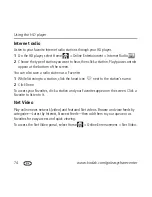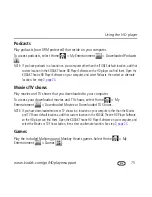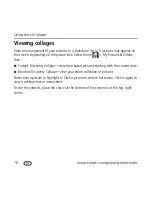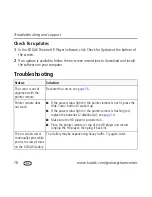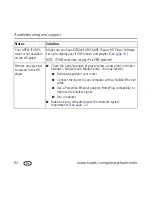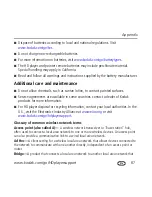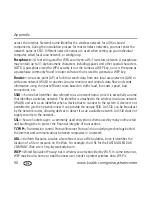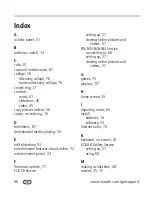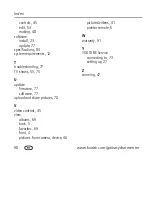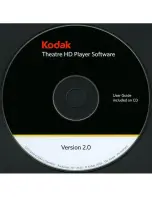
Appendix
88
www.kodak.com/go/easysharecenter
uses the same protocol (for example, wireless, Ethernet or token ring). Wireless bridges are
commonly used to link buildings in campuses.
Client—
An application on a computer or device connected to a network that requests
services (files, print capability) from another connected computer or device on the network.
Device to device—
See Ad Hoc.
DHCP—
Dynamic Host configuration Protocol: a utility that enables a server to dynamically
assign IP addresses from a predefined list and limit their time of use so they can be
reassigned. Without DH P, all of the IP addresses of all the clients on the network would have
to be manually entered. With DH P, whenever a client connects to the network, it
automatically gets an IP address assigned to it.
DNS—
Domain Name System (or Service, or Server): a program that translates domain names
to IP addresses by accessing a database maintained on a collection of Internet servers. The
program works behind the scenes to facilitate surfing the Web with alpha versus numeric
addresses. A DNS server converts a name like mywebsite.com to a series of numbers like
107.22.55.26. Every Web site has its own specific IP address on the Internet.
Domain name—
The portion of a URL or Web address that identifies a specific Web site. For
example, the domain name portion of the URL http://www.kodak.com is kodak.com. All
domain names have a suffix that indicates the top level domain (TLD) it belongs to. Examples:
■
com: US commercial business do: Dominican Republic
■
gov: US government agency es: Spain
■
edu: US educational institution fr: France
■
mil: US military organization
■
it: Italy net: US network organization nl: Netherlands
■
org: US nonprofit organization
■
pr: Puerto Rico
Содержание Theatre HD Player
Страница 100: ......

